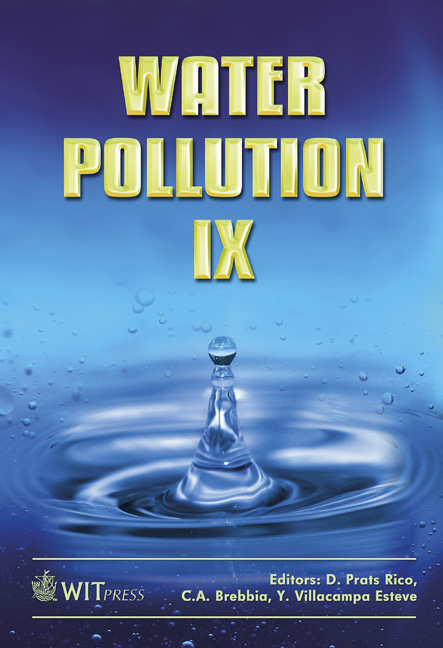Evaluation Of Posidonia Oceanica And Organic Sediment As Biosorbents: Cu Removal In Fixed Bed Columns
Price
Free (open access)
Transaction
Volume
111
Pages
10
Page Range
575 - 584
Published
2008
Size
406 kb
Paper DOI
10.2495/WP080571
Copyright
WIT Press
Author(s)
F. J. Álvarez-Hornos, C. Gabaldón, M. Izquierdo & P. Marzal
Abstract
In this work, fixed bed column experiments were performed with the aim of evaluating the Cu uptake capacity of two biosorbents. The marine phanerogam Posidonia oceanica, a waste from local beach cleaning practices at Denia (Spain), and locally available organic sediment, a highly mineralized peat from Torreblanca (Spain) were used. Column runs were carried out to determine the sorption isotherm. For this purpose, breakthrough curves up to the exhaustion point were obtained. Maximum uptake capacities were experimentally determined in 56.7 mg·g-1 and 43.3 mg·g-1 for Posidonia oceanica and organic sediment, respectively. High retention capacities indicate that these materials could be used as effective biosorbents for Cu removal. Langmuir equilibrium parameters were obtained for both biosorbents. A mass transport model including convection-dispersion and sorption processes under equilibrium or rate-controlled conditions has been developed to simulate column performance. Good compliance between experimental and modelling results was obtained. Keywords: Cu, biosorption, Posidonia oceanica, organic sediment, column experiments, mass transport model. 1 Introduction Biosorption has been revealed as a promising low-cost technology for heavy metal removal from water and wastewater. Many investigators have studied the sorption capacity of low-cost materials such as wood bark [1], peat [2, 3], lignin [4], agroindustrial wastes [5, 6] and different types of biomass [7, 8]. A major part of the literature data relating to the use of low-cost adsorbents for metal
Keywords
Cu, biosorption, Posidonia oceanica, organic sediment, column experiments, mass transport model.





